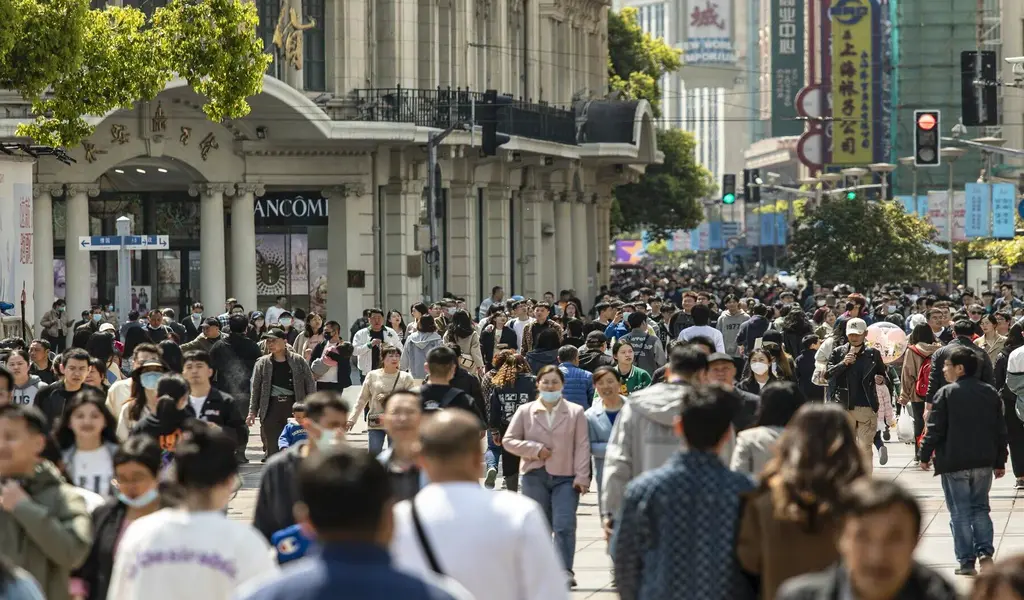(CTN News) – Strong increase in exports and infrastructure investment, as well as a comeback in retail consumption and property prices, fueled a resurgence in the world’s second-largest economy in the first quarter, helping China’s GDP grow by 4.5 percent yearly.
The official number, which beat predictions of a 4% increase, came after Chinese leader Xi Jinping’s administration worked to rebuild corporate confidence weakened by flu regulations and sudden policy changes in 2017.
Economists anticipate a pick-up in growth momentum as the year proceeds, although the rate is still below the government’s full-year objective of 5% due to a statewide Covid-19 epidemic in the first quarter.
China’s rebound crucial to global economic growth
Xi became China’s president only last month for a record-breaking third time and is eager to jumpstart the country’s economic growth. The official goal for GDP growth was 5.5 percent. Therefore, last year’s growth of 3 percent was the lowest in decades.
UBS’s senior China economist, Tao Wang, has remarked, “Definitely, the recovery’s on track.” Early on in the year, momentum was higher than anticipated.
As the developed world struggles with high inflation, rising interest rates, and slowing expansion due to the epidemic and Russia’s full-scale invasion of Ukraine, China’s recovery is critical to global economic growth this year.
China’s National Bureau of Statistics states, “The national economy showed a steady recovery and made a good start.” The agency did issue a warning that the situation was “complex and volatile, inadequate domestic demand remains prominent, and the foundation for economic recovery is not solid yet.”
The Chinese commodity markets rose on Tuesday after the data release, but the stock market quickly gave up its gains.
China lifted its zero-Covid restrictions in December
In response to public outcry at the rolling lockdowns that plagued Chinese cities for much of 2018, China lifted its zero-Covid restrictions in December.
As pent-up demand was released, retail sales increased 5.8 percent annually in the first quarter and 10.6 percent in March. However, this year’s numbers were skewed because of Shanghai’s lengthy lockdown that began in late February 2022.
Xi’s new number two, Premier Li Qiang, hinted at easing the government’s crackdown on business last month in China’s rubber-stamp parliament, wiping out billions of yuan for real estate developers and online platforms.
The first quarter saw a 3% increase in industrial output and a 7% increase in manufacturing investment. The strong expansion was seen in exports, up 8.4% in the first quarter, as well as in state-led infrastructure investment, up 8.8%, and in overall fixed asset investment, up 5.1%. The 0.6% increase in private investment in February indicated a fall in March.
New housing starts fell by 19.2 percent year over year in the first quarter, adding to the property market’s problems. While home sales, as measured in square footage, fell 1.8%, sales, as measured in value, jumped 4.1%, suggesting a price recovery was underway. New home prices increased at a rate not seen in 21 months in March.
Economists predict momentum to pick up in Q2, but warn of challenges ahead
March’s unemployment rate was 5.3%, down from 5.6% in February, while the 19.6% rate among young people was the second highest on record.
Experts predicted that the economy would gain steam in the second quarter thanks to the low base effect, but they cautioned that strong growth in consumption and real estate could be threatened by weakening developed market demand.
After crippling the private sector, experts said a lack of trust still hampered Xi’s administration.
Professor at the London School of Economics and author of The New China Playbook, Keyu Jin, cited a lack of private sector demand for consumption and investment as the most significant challenge.
She opined, “Confidence in the Chinese economy will take time to return.”





